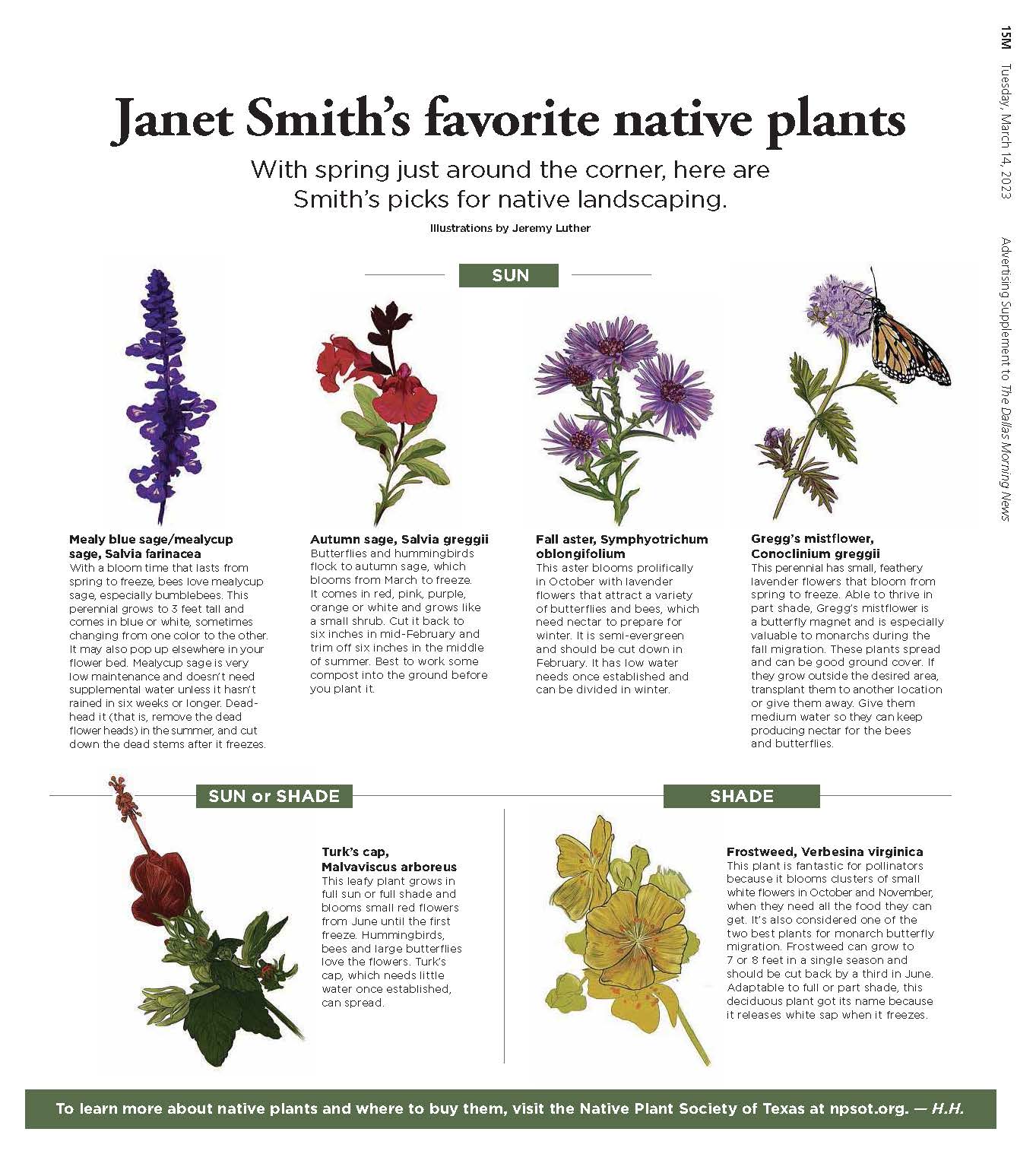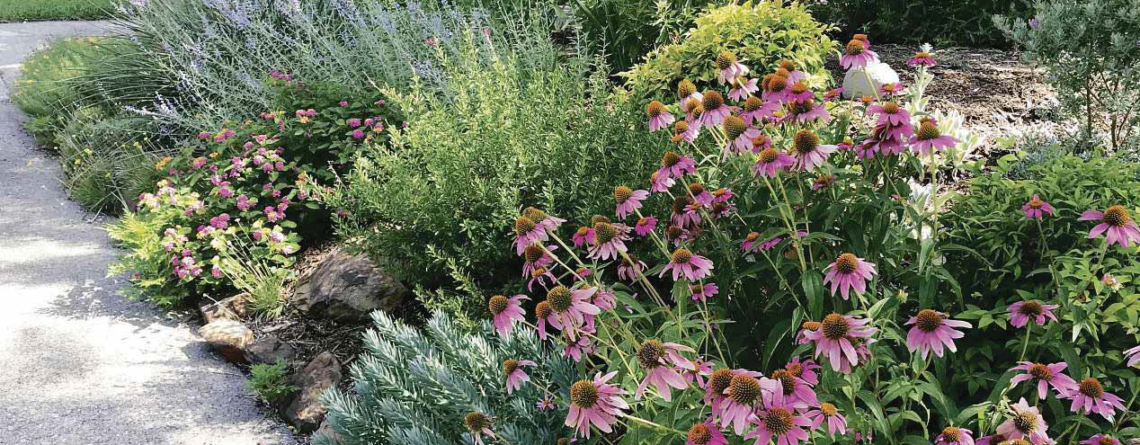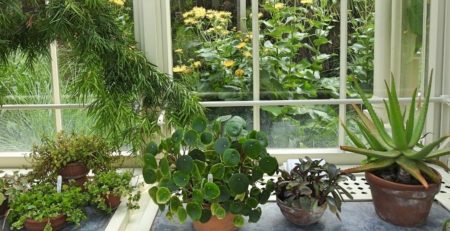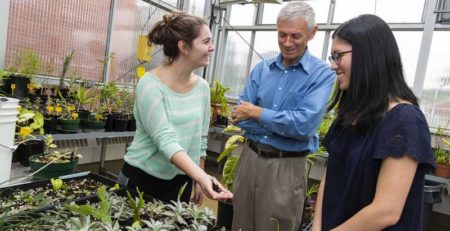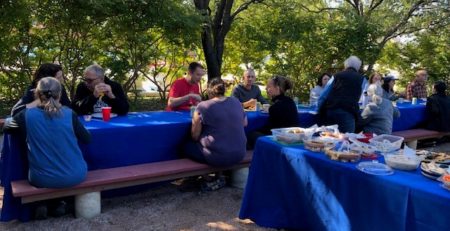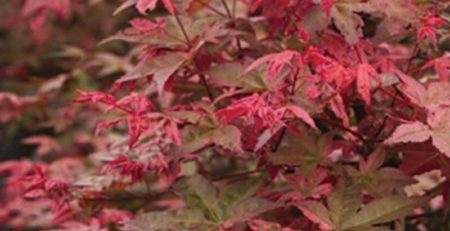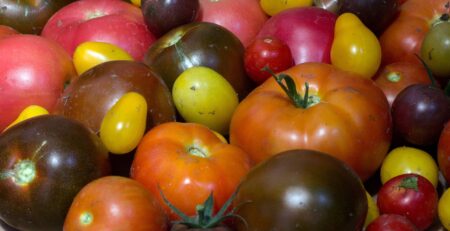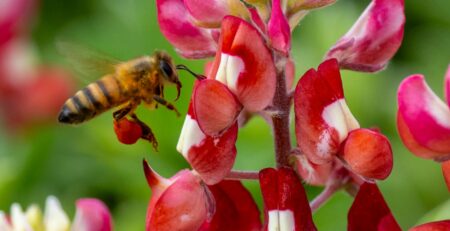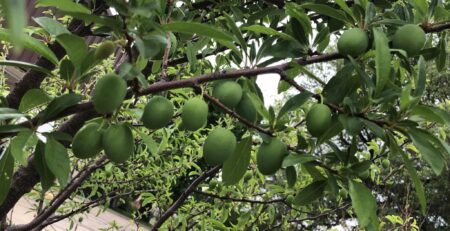Bloom where you’re planted
Special thanks to the Dallas Morning News for allowing us to reprint this superb article about the amazing DCMG Janet D. Smith and her stunning native landscape!
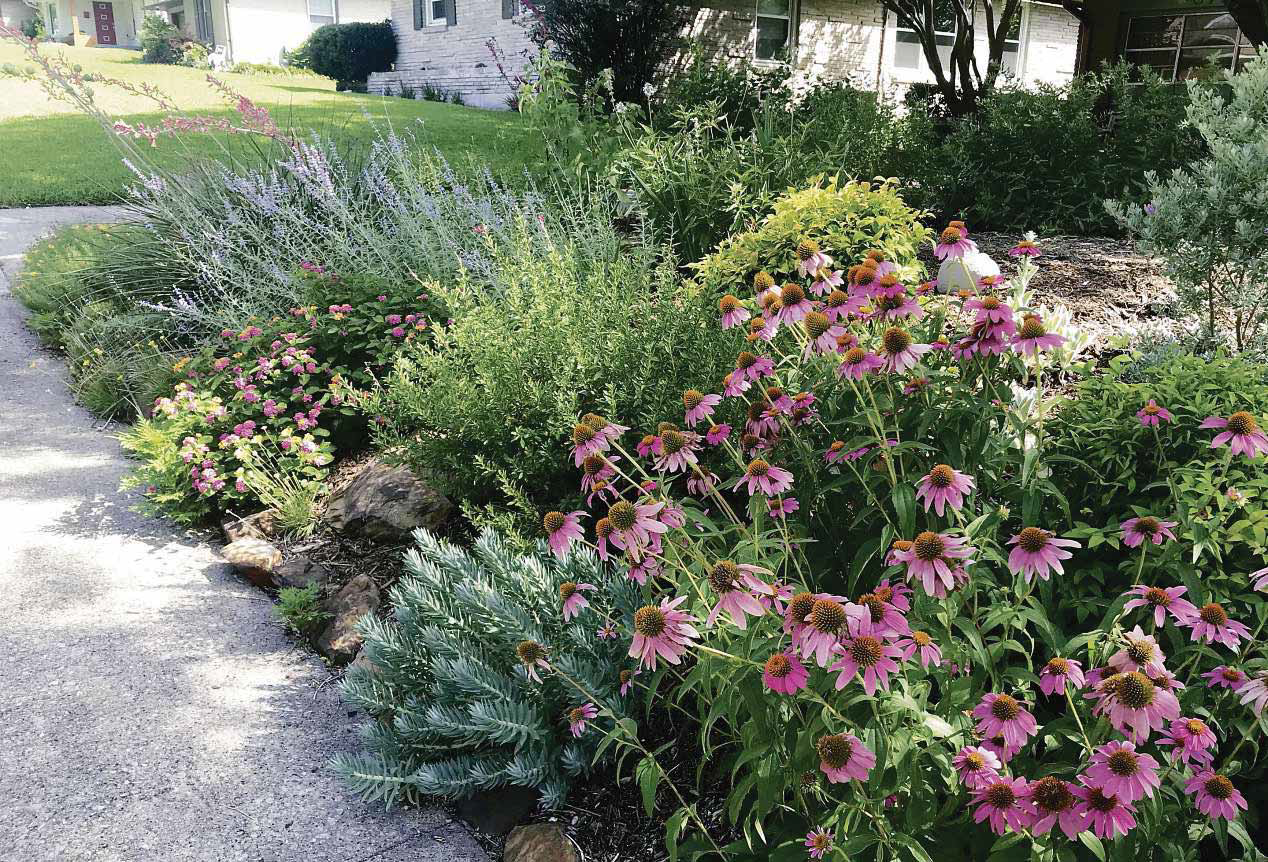
Bloom where you’re planted
Master gardener Janet Smith’s educational talks are inspiring green thumbs across North Texas.
Janet D. Smith knew zero about gardening when she was faced with landscaping a huge berm of dirt in her front yard. She was such a neophyte, she says, “I didn’t even know you were supposed to water plants when you put
them in the ground.”
The pile, which was 5 feet high and spanned 600 square feet, had come from her backyard, where dirt had accumulated after rolling down the hill from neighboring properties. To correct the drainage in her backyard, that excess soil had to go. Smith figured it was easier and cheaper to dump it near the base of her sloped front yard than to have it hauled away. Little did she know that berm would change her life.
It was October 2005, three years into Smith’s retirement from running the computer system for human resources at Dallas County Community College, now called Dallas College. She had plenty of time on her hands. Noticing her naivete in gardening, friends advised she add organic matter to the pile, so she collected bags of leaves on her block and added them to the berm, securing it all with a layer of jute. Another friend recommended that she apply for the Dallas County master gardening program.
Offered through the Texas AgriLife Extension Service, which is part of the Texas A&M University System, the 50-hour course is free in exchange for a commitment to volunteer 50 hours for the Dallas County AgriLife Extension program.
“Our turf grass is as useful as concrete… we’ve got to do something more productive for the earth to maintain it so we can survive.”
The training course offers instruction in lawn care; ornamental trees and shrubs; insect, disease and weed management; soil and plant nutrition; vegetable gardening; home fruit production; garden flowers; perennials and annuals; and water conservation.
Smith, who had “avoided science as much as I could” for her entire life, plunged in. Now, she’s not only a Dallas County master gardener but also a North Texas master naturalist, having completed the Texas AgriLife Extension course about the region’s flora and fauna, including trees, wildlife and insects.

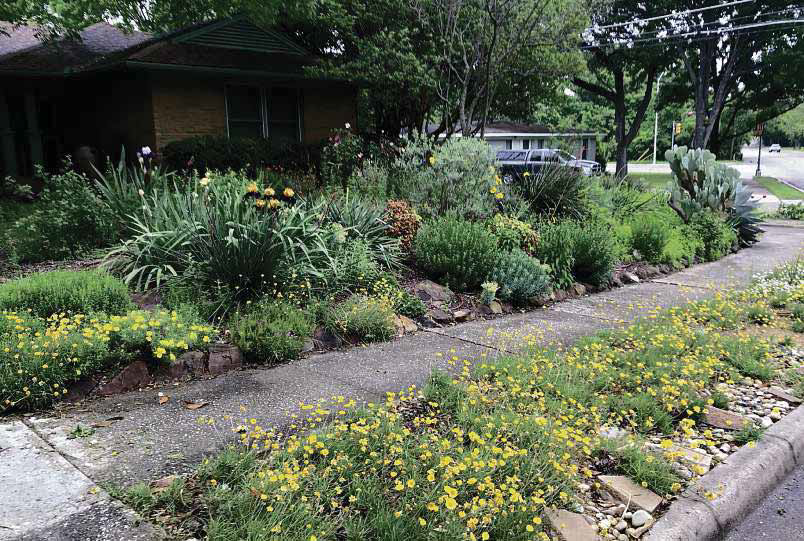
The naturalist and gardener programs are both designed to cultivate volunteers to provide education, outreach and service to the community.
Smith, 75, regularly gives informative talks to public and private groups around the area on behalf of Texas A&M AgriLife Extension.
Teaching primarily about butterflies, pollination, and heat- and drought-tolerant native plants, she gives presentations at gardening clubs, schools, churches, civic groups and more. “I really enjoy educating people and giving my talks,” Smith says. “I say I’m a ‘level 101’ speaker because I know what it’s like to know nothing. There’s no question too dumb to ask me.”
One of her most popular talks was inspired by the book “Sex in Your Garden,” which uses humor to describe how plants need pollinators in order to create seeds and reproduce. “It piqued my interest because it explained about pollination in a populist way,” she says.
Pollinators, including bees, butterflies, birds and other animals, help more than 80% of global flowering plants to reproduce. In addition, they are essential to many crops, including most fruits, vegetables and nuts. Smith likes to show a picture of a fuzzy Mexican long-nosed bat in her PowerPoint presentation, pointing out that it’s the primary pollinator of the agave plants, from which tequila is made.
According to Dave Forehand, vice president of gardens at the Dallas Arboretum and Botanical Garden, Smith’s talks are full of great information because she’s so knowledgeable. “She understands the nuances of our clay soil—what will grow and what won’t—along with the best plants to fill your garden to attract butterflies,” Forehand says. “We invite people to join us to hear her talk and then tour the gardens to see the plants we have that attract butterflies, particularly the Moody Oasis rooftop garden in the Rory Meyers Children’s Adventure Garden.”
Smith also lectures frequently about using indigenous plants in landscaping.
“Our turf grass is as useful as concrete,” she says. “It’s just a cultural thing. We’ve grown up with lawns, and it’s what we expect homeowners to have, but we’ve got to do something more productive for the earth to maintain it so we can survive.”
Native plants help the environment by providing food sources for local birds, insects and other wildlife. They also conserve water because they’re heat and drought tolerant, and they can help reduce pollution, since you don’t need to use a lawn mower or other equipment that’s often gas-powered. In addition, their long root systems prevent soil erosion.
At her home in Old Lake Highlands, Smith has quite a few favorite species that thrive, including purple coneflower, autumn sage, Texas sage, lantana,
four-nerve daisy, mealycup sage and others. “If homeowners used native plants, we could have the whole country be like a national park,” she says.
To see Smith in action, catch her upcoming free talk “Butterflies” at 11 a.m. on May 5 at the Dallas Arboretum and Botanical Garden; “Nature’s Best Hope,” about native plants, at 1:15 p.m. on May 6 at White Rock Bath House Cultural Center; and “Sex in the Garden,” at 7 p.m. on May 16 for Trinity Valley Beekeepers Association at Dallas Elks Lodge 71.
Holly Haber is a Dallas-based freelance writer.
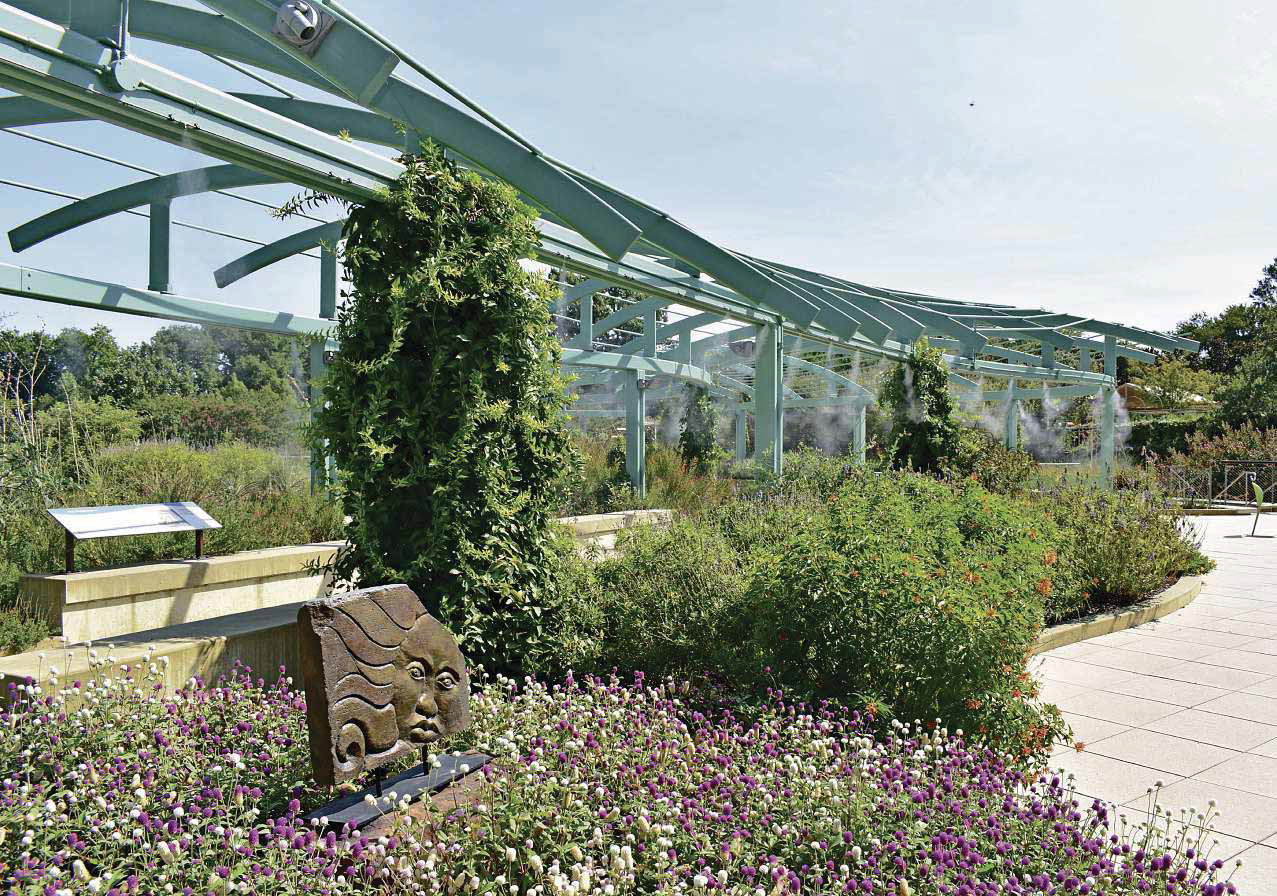
Afterward, guests can tour the grounds, including the Moody Oasis rooftop garden (above).
